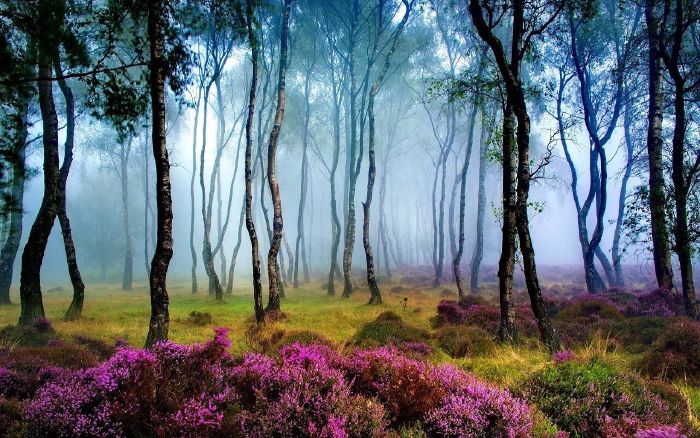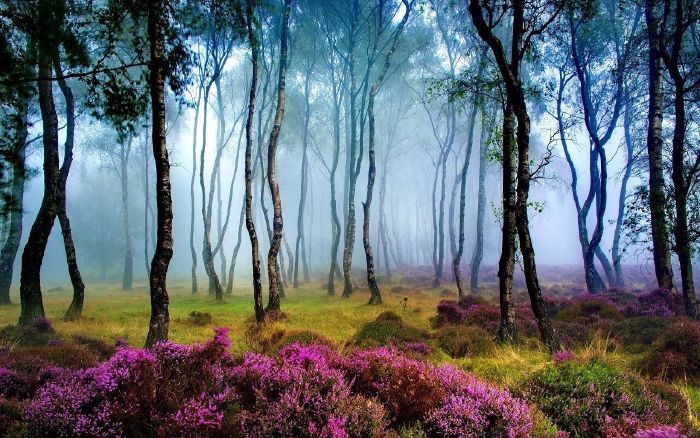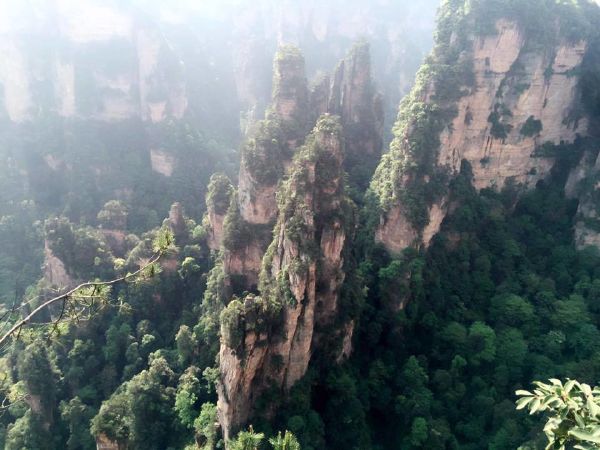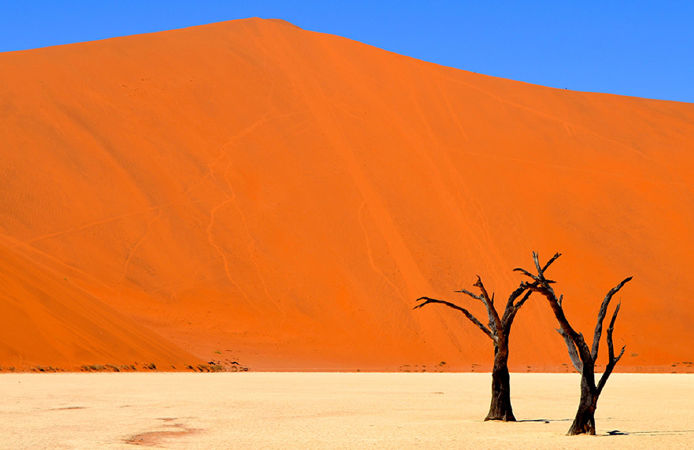Top 11 most beautiful forests in the world
Just mentioning the forest is that many people imagine a place where many trees, there are animals and very dangerous. Yes, but why the forests full of risks are still so attracted to many adventurous, adventurous visitors? The main answer in the beautiful scenery in these forests and the feeling of being overcome the dangerous things that have fascinated the "Backpacking tourism".
6
Quebec Forest, Canada

Canada's northern Quebec Forest "has a charming white glow." The trees are straight, golden foliage in autumn, creating a magical landscape of the northern forest. Sometimes you get to see the deer wandering in the Snow White forest.
7
Stanton Moor Forest, England

Stanton Moor Forest is located in central and the northern Derbyshire Peak of England is known for its range, especially the stone circle of Nine Ladies.
Stanton Moor Forest is one of the most beautiful forests in the world in the UK. Stanton Moor Forest is located in central England, which is very famous for its range, and is the stone circle of Nine Ladies. When you arrive here, you will not be surprised by the beautiful and enchanting beauty of the forest.
8
Stanton Moor Forest, England

It is an English forest, not too bushy and dangerous, its beauty comes from the mystery of the mist covering the trees and the flowers beneath it. The forest is also famous for its range.
9
Primitive Forest in Zhangjiajie Park, China

Located about a 45-minute bus ride from Zhangjiajie Tourism Center, Zhangjiajie National Park has a wide range of pristine forest populations around 4.810 ha located at an altitude above 1000m above sea level, UNESCO World Natural Heritage Site in 1992 and recognized as a world geological park in 2004. With a humid subtropical climate, this place has always been covered by fog, which contributes to the illusion of a futuristic blur.
Sandstone forest is the most famous scenery from Zhangjiajie Natural National Garden. This is a tall, rocky Mountain building, towering over rocky cliffs that have created a very impressive backdrop for visitors. Here with about 3,000 pillars and cliffs with widespread oddly shapes, owning a rock pillar of up to 800m, alternating between the stone pillars and the ravine is a system of caves, streams, and the original forest canopy of the residence from the thousands of temperate plants. The entire landscape with a pioneering view from the Zhangjiajie National Garden has been attributed to the complex geological creation of the site through several times of the Earth's lower crust, accompanied by a process of corrosion and digestion.
With over 800 water circuits from ponds, lakes, rivers, streams, waterfalls... Abundance has given this place never encountered water shortages in the dry season. Together with the boats on Bao Phong Lake, you will have the opportunity to immerse yourself, admire the wonderful scenery like the paint of the Blue Mountains 2 on the shore and the waterfalls pour down the ridge of the slopes.
In addition, to the Zhangjiajie guests can not mention the mountain of Thien Mon, is one of the most famous and the most distinctive mountains here. To get up the mountain you must go all the way 11 kilometers long winding around the mountain, this road is rather steep and increase the altitude of 200m to 1,300 m with 99 zigzag bends. Or buy a simpler secret to the mountain is to use the cable car to see the full Mountain View is the most complete. When you reach the foot of the mountain, you must continue conquering 999 steps to get to the sky gate.
10
Deadvlei, Namibia

The white clay Basin Deadvlei in Namibia appears to be a mammoth by the series of black tree trunks, bare-leaf stems that existed for hundreds of years.
Amid the towering red sand dunes of the Namib-Naukluft Park, Deadvlei is nearly Sossusvlei in a haunting setting. The name Deadvlei means dead marsh. The dry white clay basin is a swamp, surrounded by the highest red sand dunes in the world.
It is believed that the clay pans formed from more than 1,000 years ago, when the river Tsauchab was flooded after heavy rains and created shallow water puddles. In the swamps, camel barberry begins to grow.
However, after about 200 years, climate change, drought occurs in the region. Sand begins to encroach on the area, blocking the Tsaucheb line and water sources flowing into the swamp. There is no water, harsh climate, gradually dying vegetation. However, they do not disappear over time.
Instead of decomposition, the desert sun scorched plants into black bone branches. Drought makes the stem undegradable. The bare-leaf branches stuck hundreds of years between the white clay swamp of black charcoal under the heat of the desert. This is one of the places for you to see the most clear skies on the planet.
Red sand dunes, blue sky causes the dead lagoon scene to appear more fanciful. Thanks to morning fog, salsola shrubs and melons of Nara can still survive, creating a life of barren forests.
To get here, you have to use a dedicated car to cross the dunes high. The Devil of the valley has dragged visitors here to check-in. In it, watching the sunrise (or sunset) on the giant red sand dunes of the Namib desert is the experience you should not ignore.
Suitable for you
02-07-2023 cookie
02-07-2023 cookie
01-07-2023 cookie
01-07-2023 cookie
01-07-2023 cookie
